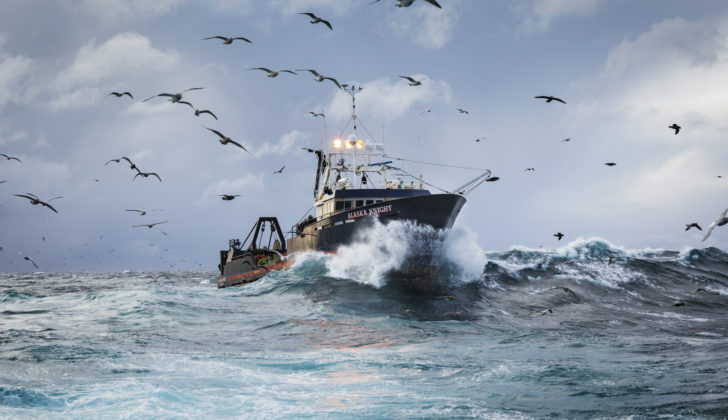They say good things come in small packages. That’s the case for Alaska cod fishermen heading into the new year.
A small cod fishery will occur in Gulf of Alaska state waters (out to three miles) for 2020, putting to rest speculation that no cod would be coming out of the gulf next year.
A catch quota of about 5.6 million pounds, down from 10.2 million pounds, will be split among five regions: Prince William Sound, Cook Inlet, Kodiak, Chignik and the South Alaska Peninsula, with limitations on gear and staggered openers.
That will be a relief to thousands of Alaskans whose jobs are tied to the fishing industry. Unlike other coastal communities that run on summer salmon, P-cod typically kicks off fishing on New Year’s Day in many fishing towns and keeps workers busy at seafood processing, transports, fuel docks, grocery stores, repair shops and other businesses throughout the year.
Almost unnoticed in the mainstream news media, fishery managers in an unprecedented move earlier this month shut down cod fisheries for 2020 in gulf federal waters (from three to 200 miles) due to sharp downturn of the stock.
The fish were clobbered by a three-year heat wave starting in 2014 that raised water temperatures by as much as five degrees. The shift hurt several cod year classes and their offspring by throwing their metabolism and diets off kilter. Cod numbers decreased from nearly 250.5 million pounds in 2014 to under 30 million pounds in 2018 and surveys this year showed more declines.
“Think of no salmon returns to Bristol Bay. Or a shutdown of pollock for the A-season in the Bering Sea. This is the kind of seismic impact the changes in climate have wrought with cod,” John Sackton, founder of SeafoodNews.com, wrote.
When making their decisions, fishery managers must consider other cod-dependent users. By law, strict apportionments must accommodate the diet of sea lions, a protected species.
“The closure they’ve announced this year is not because of overfishing or a stock collapse. It’s really because of federal mitigation measures for Steller sea lions,” said Doug Vincent-Lang, Commissioner of the Alaska Department of Fish and Game.
The state cod fisheries are determined by surveys and stock models done by federal overseers who then break out the catch among all Alaska fishing regions and gear types.
While some fishermen questioned the opener, suggesting it would be best to “let the gulf cod rest a bit,” Commissioner Vincent-Lang defended the decision and called it a “balancing act.”
“This decision is a carefully thought out and conservative approach to recognize the balance between conservation and Alaska’s right to manage our own resources. We are confident that we’ve struck that balance in this decision and will be monitoring to avoid over harvest yet provide our fishermen the opportunity to fish,” he said in an email.
Gov. Mike Dunleavy added in a statement that he trusts Fish and Game officials to monitor and manage the fishery in a way that avoids overharvest and yet provides an opportunity to fish and provide tax revenues for fishing towns.
Around 225 boats of all sizes fish for cod in the Gulf of Alaska, including trawlers, longliners, pot boats and jiggers, each an independent business supporting several families.
The gulf cod outlook is grim, with surveys showing very few tiny cod in the water. Worse, an even hotter blob appears to be on the horizon, said Steve Barbeaux, a scientist with NOAA's Alaska Fisheries Science Center.
The future is getting harder to predict, said Nat Nichols, area groundfish manager at the Department of Fish and Game in Kodiak, because decades of robust data used to assess the stocks no longer apply.
“All of a sudden all the data you collected in the ’80s and ’90s about how ocean conditions affect certain stocks start to become a lot less useful for making predictions because it's so different than anything we've seen,” Nichols said. “If you're trying to compare ocean conditions this year and make a forecast for next year, that works pretty well if you've seen these conditions before. But if you haven't, it starts to fall apart pretty quick.”
Meanwhile, Trident Seafoods announced last month that it will close its Sand Point processing plant at Sand Point for the winter. It is the first such closure at Sand Point since 1898 when it was founded by a San Francisco fishing company as a cod fishing station and trading post.
Pacific cod is Alaska’s second largest groundfish catch by volume topping 510 million pounds in 2018 (a 22 percent decrease from 2017), according to an economic status report by the North Pacific Fishery Management Council plan team. The combined dockside value of Bering Sea and gulf cod catches in 2018 totaled $225 million, reflecting a 59 percent drop in the gulf to just $29 million.
There will be a 2020 cod fishery in the Bering Sea of 305.5 million pounds, down by nearly 1 million pounds.







